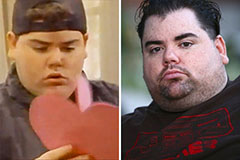Have you been trying to find know-how on Diagnose Unwanted Plumbing Noises?

To identify loud plumbing, it is very important to figure out initial whether the undesirable audios take place on the system's inlet side-in various other words, when water is turned on-or on the drain side. Sounds on the inlet side have varied causes: excessive water pressure, worn valve as well as faucet parts, improperly linked pumps or various other devices, inaccurately positioned pipeline bolts, and also plumbing runs having way too many limited bends or various other constraints. Sounds on the drainpipe side generally originate from inadequate area or, similar to some inlet side sound, a format including tight bends.
Hissing
Hissing sound that happens when a tap is opened somewhat typically signals extreme water pressure. Consult your local water company if you suspect this trouble; it will certainly have the ability to inform you the water stress in your area and can install a pressurereducing shutoff on the inbound water pipe if necessary.
Thudding
Thudding noise, usually accompanied by shivering pipes, when a faucet or device shutoff is shut off is a condition called water hammer. The noise and also resonance are triggered by the reverberating wave of stress in the water, which instantly has no location to go. In some cases opening a shutoff that discharges water rapidly into an area of piping consisting of a constraint, elbow, or tee installation can produce the same problem.
Water hammer can normally be cured by mounting installations called air chambers or shock absorbers in the plumbing to which the issue valves or taps are linked. These devices permit the shock wave produced by the halted flow of water to dissipate airborne they include, which (unlike water) is compressible.
Older plumbing systems may have brief vertical areas of capped pipeline behind walls on faucet competes the same objective; these can ultimately fill with water, lowering or ruining their effectiveness. The treatment is to drain the water supply totally by shutting off the primary water supply shutoff and opening up all faucets. After that open the major supply valve and shut the faucets individually, starting with the tap nearest the valve as well as ending with the one farthest away.
Babbling or Screeching
Extreme chattering or screeching that takes place when a valve or tap is turned on, which usually vanishes when the fitting is opened completely, signals loosened or faulty inner parts. The remedy is to change the valve or tap with a brand-new one.
Pumps and devices such as washing machines as well as dishwashers can move motor sound to pipes if they are poorly linked. Connect such products to plumbing with plastic or rubber hoses-never inflexible pipe-to isolate them.
Other Inlet Side Noises
Squeaking, squeaking, damaging, snapping, and also tapping normally are caused by the growth or contraction of pipes, typically copper ones providing hot water. The sounds happen as the pipelines slide against loose bolts or strike nearby house framework. You can usually determine the location of the issue if the pipelines are revealed; just comply with the audio when the pipelines are making noise. Probably you will certainly find a loose pipe wall mount or a location where pipelines lie so close to floor joists or various other mounting items that they clatter against them. Connecting foam pipeline insulation around the pipelines at the point of call should fix the issue. Make sure bands and also hangers are safe and secure and also provide ample assistance. Where possible, pipe fasteners ought to be connected to large architectural components such as structure wall surfaces as opposed to to mounting; doing so lessens the transmission of vibrations from plumbing to surfaces that can enhance and transfer them. If attaching bolts to framework is inescapable, cover pipes with insulation or other resistant product where they call fasteners, and sandwich the ends of brand-new bolts in between rubber washers when mounting them.
Dealing with plumbing runs that experience flow-restricting limited or many bends is a last hope that ought to be carried out only after speaking with a competent plumbing contractor. Unfortunately, this scenario is relatively typical in older houses that may not have been constructed with interior plumbing or that have seen numerous remodels, particularly by novices.
Drainpipe Sound
On the drain side of plumbing, the chief objectives are to get rid of surfaces that can be struck by dropping or rushing water and to insulate pipelines to include inescapable noises.
In new building and construction, tubs, shower stalls, toilets, and also wallmounted sinks and containers ought to be set on or versus durable underlayments to reduce the transmission of audio with them. Water-saving toilets as well as faucets are much less noisy than standard designs; mount them rather than older types even if codes in your area still allow using older components.
Drainpipes that do not run up and down to the basement or that branch right into straight pipeline runs supported at flooring joists or various other mounting present specifically frustrating sound issues. Such pipes are huge sufficient to radiate substantial vibration; they additionally carry considerable quantities of water, that makes the situation worse. In brand-new building and construction, define cast-iron soil pipes (the big pipelines that drain pipes commodes) if you can manage them. Their enormity contains much of the noise made by water travelling through them. Also, prevent transmitting drainpipes in walls shown rooms and rooms where individuals collect. Wall surfaces having drains should be soundproofed as was described earlier, utilizing dual panels of sound-insulating fiber board and wallboard. Pipes themselves can be wrapped with special fiberglass insulation made for the purpose; such pipes have an impervious vinyl skin (in some cases having lead). Outcomes are not constantly satisfactory.
WHY IS MY PLUMBING MAKING SO MUCH NOISE?
This noise indeed sounds like someone is banging a hammer against your pipes! It happens when a faucet is opened, allowed to run for a bit, then quickly shut — causing the rushing water to slam against the shut-off valve.
To remedy this, you’ll need to check and refill your air chamber. Air chambers are filled with — you guessed it — air and help absorb the shock of moving water (that comes to a sudden stop). Over time, these chambers can fill with water, making them less effective.
You’ll want to turn off your home’s water supply, then open ALL faucets (from the bathroom sink to outdoor hose bib) to drain your pipes. Then, turn the water back on and hopefully the noise stops! If you’re still hearing the sound, give us a call to examine further.
Whistles
Whistling sounds can be frustrating, as sometimes the source isn’t easily identified. However, if you can pinpoint which faucet or valve that may be the cause, you’ll likely encounter a worn gasket or washer — an easy fix if you replace the worn parts!Whistling sounds from elsewhere can mean a number of things — from high water pressure to mineral deposits. Your best plan of attack here is to give our plumbing experts a call. We’ll be able to determine where the noise is coming from and what the cause may be, then recommend an effective fix!
Cracks or Ticks
Cracking or ticking typically comes from hot water going through cold, copper pipes. This causes the copper to expand resulting in a cracking or ticking sound. Once the pipes stop expanding, the noise should stop as well.
Pro tip: you may want to lower the temperature of your water heater to see if that helps lessen the sound, or wrapping the pipe in insulation can also help muffle the noise.
Bangs
Bangs typically come from water pressure that’s too high. To test for high water pressure, get a pressure gauge and attach it to your faucet. Water pressure should be no higher than 80 psi (pounds per square inch) and also no lower than 40 psi. If you find a number greater than 80 psi, then you’ve found your problem!
Next step is to give us a call in order to install a pressure regulator. Trust us, you don’t want to wait to resolve this issue. Not only is the sound annoying, but high water pressure can be destructive to your home — including damaging certain appliances, like your washer and dishwasher.
Dripping
You might be accustom to the slow quiet drip your kitchen faucet makes. You might have even tuned out your bathroom sink dripping and drabbing all day long — but it’s time to find its cause.
A slow drip could signify a variety of easy to fix issues, such as a worn out O ring, or loose part. And by ignoring the drip, you could be wasting up to 2,000 gallons of water a year! So start conserving water — get it looked at ASAP.
https://www.pwessig.com/blog/2018/december/why-is-my-plumbing-making-so-much-noise-/

As an avid reader about Diagnose Unwanted Plumbing Noises, I assumed sharing that topic was a great idea. Sharing is nice. Helping others is fun. I thank you for reading our article about Why Do My Plumbing Pipes Make A Knocking Noise.
Browse Website
 Jonathan Taylor Thomas Then & Now!
Jonathan Taylor Thomas Then & Now! Jonathan Lipnicki Then & Now!
Jonathan Lipnicki Then & Now! Lark Voorhies Then & Now!
Lark Voorhies Then & Now! Michael Bower Then & Now!
Michael Bower Then & Now! Danny Pintauro Then & Now!
Danny Pintauro Then & Now!